Sony QX10 review
Is the Sony QX10 smart lens worth sticking on your smartphone?
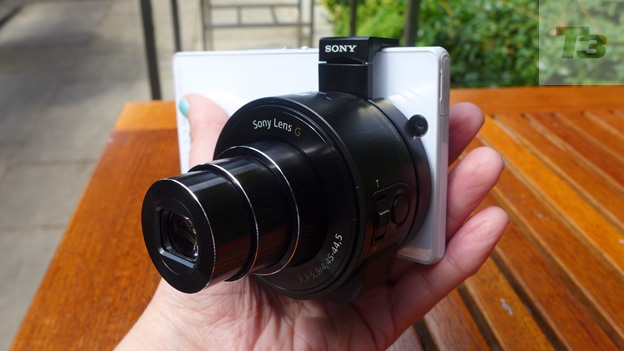
-
+
Fun to use
-
+
Original looking results
-
+
Good price
-
-
Doesn’t fit some phablets
-
-
No flash
-
-
No proper photography controls
Why you can trust T3

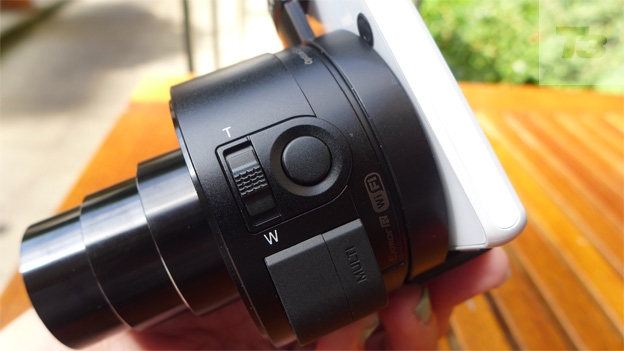
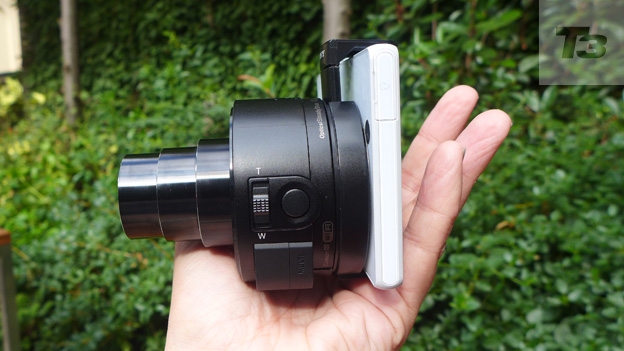
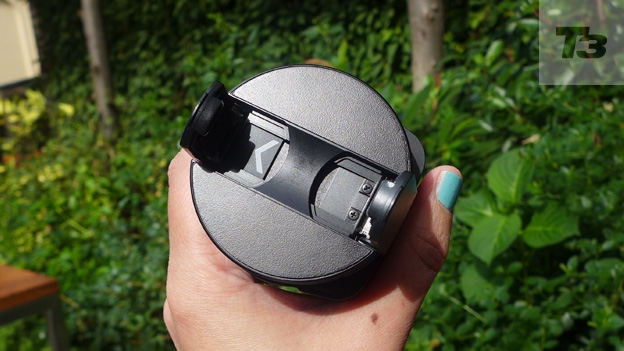
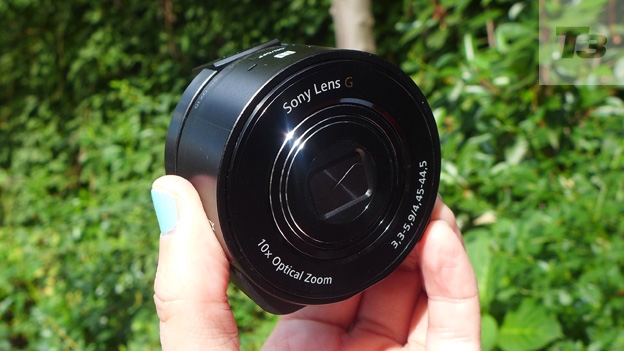
Sony's new smart lenses are designed to boost your smartphones camera, but are they worth your pennies? Check out our Sony QX10 review
The Sony QX10 is a concept of oddity and brilliance rolled into one. It's a camera without a body and it wants to use your smartphone as its screen.
Why would you want to let it? Well, the major boost of the Sony QX10 is that it'll bring 10x optical zoom to your mobile photography. The Nokia Lumia 1020 may advertise itself for its telephoto abilities, but what a so-called lens camera can offer is in an entirely different league.
The only similar product you'll find is the the Sony QX10's bigger brother, the Sony QX100 . It's the big zoom that you get with the former along with a far lower £164 asking price. There's more megapixels and a faster, Carl Zeiss lens to be won should you care to stump up an eye-watering £384 of the latter. For that money, though, one might argue that a high end compact would be a better investment, but can the same be said of the Sony QX10?
Sony QX10: Size and build
Size most definitely matters when you're talking about a lens camera. It needs to be significantly more convenient to carry around than a compact otherwise it's more a flight of tech fancy than a gadget that actually solves a problem.
It's a pretty close run thing with the Sony QX10 but we'd say that it's no easier on your pocket than a slim, high-end snapper like the Canon PowerShot S120 or Panasonic LX7 .
It's certainly much lighter at just 90g and the circular, hockey puck shape is definitely good. The only trouble is that it's really quite thick measuring 62.4 x 61.8 x 33.3mm and it's really thickness that's the killer when to comes to mobility. That's something that smartphone manufacturers figured out as the dawn of the phablet arrived.
Aesthetically, it's a nice piece of kit, though. It looks wonderfully intriguing, it's solidly built and the few buttons that do exist are well-considered. What's more, we really like the fold-out clip that you attach to the rear. It forms a bracket which adjusts neatly on a spring to make sure that it can stick itself to most normal smartphones.
The only problem is that there are a quite a few abnormal smartphones out there theses days and the bracket wouldn't go wide enough to latch onto the 6-inch Nokia Lumia 1520 phablet that we were testing out at the same time. The QX10 extends to a maximum phone width of 74mm. Make sure it fits yours before you buy. Black or white is your only choice beyond.
Sony QX10: Features
You can use the Sony QX10 as a camera independent of your mobile phone if you like. You won't have a clue what you're shooting or what you've shot but that doesn't make it any less worthwhile a venture. You can capture both 18MP stills and Full HD video entirely blind and store it all on the microSD card stowed safely at the heart of the device, right next to the battery.
Things really come to life, though, when you connect this lens camera to a mobile using a local Wi-Fi loop as constantly broadcast by the Sony QX10 whenever you have it switched on. You'll need to download the Sony PlayMemories app from either Google Play or the iTunes App Store to get it all to work, so that rules out anything non-iOS and Android. In fact, if your device carries any software less than Android 4.3, then you're out of luck too.
Connection's quick and easy enough by Wi-Fi and, in practice, not much slower than using NFC once you've managed to switch it on.
Your mobile phone comes to life as the Sony QX10 view screen very quickly after powering up the app and it's then up to you whether you'd like to use the shutter release on the device itself or the touch-control on your mobile display.
By the same token, you don't actually have to use the clamp to attach the camera to your smartphone at all. Instead, we found it quite a lot of fun to go around snapping away with the Sony QX10 in one hand and our mobile phone in the other (we were using an iPhone 4S, for those just dying to know).
Going that way allows you to get all sorts of interesting shots from up high, down low and it's great for selfies and groupies (a camera word we've just invented) because you can balance the Sony QX10 in all sorts of places.
Sony QX10: Controls
On the Sony QX10 itself, there are very few controls. You can zoom, you can shoot and you can switch it on and off. That's it. You can't even take video which is a bit annoying. It's only once paired to a mobile phone that the app offers you all the other controls that you need.
You can still find a shutter release and zoom control but probably the most important addition is a touch-to-focus control given that the AF on the Sony QX10 isn't as intelligent as most cameras we've used.
Beyond that, you can burrow into the menus a little further and find options for image sizes and whether or not you'd like two copies of the pictures saved; one on the Sony QX10 and the other on your mobile phone.
Finally, there's a self-timer which is rather crucial unless you'd like to see yourself staring at your mobile phone in all of your photos. And that's it. There's no ISO settings, no shutter speed nor aperture, no white balance, exposure control, colour filters nor anything else you might expect to find on an ordinary camera.
While it can be argued that the Sony QX10 is not that sort of camera experience, we still found errors in look and exposure that we simply couldn't correct very frustrating. It's not crucial, though. If we really wanted quality snaps, we'd have used a quality camera.
Sony QX10: Picture quality
Speaking of quality, we're pleased to report that the results from the Sony QX10 are pretty decent. Colour accuracy isn't always bang on, it can get a bit noisy in low light conditions and you'll often get blur given that there's no flash and the focus isn't always spot on. Now, this may sound like a litany of damnation but there is one shining facet of the pictures that makes the Sony QX10 worth using.
When shooting blind - i.e. without the mobile phone link - or when in two-handed mode - i.e. not physically attached to your smartphone but still connected by Wi-Fi - what you end up with are some very candid and unusually-angled photographs. Most things are either framed on the tilt or from a point of view that your eyes rarely receive.
We loved all the street level pictures of our friends and family and all the unintentional compositions that popped up. It gives the Sony QX10 a genuine place in your photographic tool kit and well worth investing in for the quite reasonable price tag.
Sony QX10: Verdict
There's plenty of areas where the Sony QX10 lens camera needs improvement. It should really be smaller and more convenient to carry around. It needs to have proper, granular photographic control. It also badly needs a flash, or at least a way of utilising the one on your smartphone.
Despite all that, though, despite the fact the results aren't always as clean as you might expect, this is a device that's still well worth your money.
You can spend that kind of cash on a compact camera but you're unlikely to get the kind of interesting photos to which the Sony QX10 and its unique modus operandi lends itself. Flawed, original and fun; it can be our wingman any time.
Sony QX10 release date: Out now
Sony QX10 price: £164
Sign up to the T3 newsletter for smarter living straight to your inbox
Get all the latest news, reviews, deals and buying guides on gorgeous tech, home and active products from the T3 experts
-
 Google just added a new Gemini video creation tool I never knew I needed
Google just added a new Gemini video creation tool I never knew I neededGemini Advanced just added Veo 2 video generation
By Mike Lowe Published
-
 One of the best villains in gaming is coming to Xbox Game Pass for free
One of the best villains in gaming is coming to Xbox Game Pass for freeAll Game Pass subscribers are getting one of the best single-player shooters of the decade
By Rik Henderson Published
-
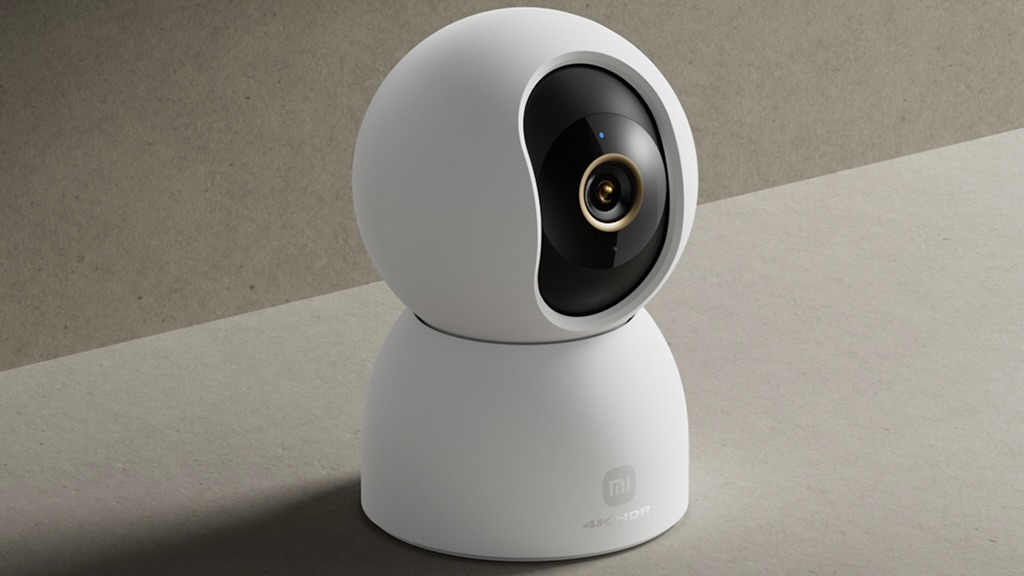 Xiaomi’s next indoor smart security camera could be its most affordable yet
Xiaomi’s next indoor smart security camera could be its most affordable yetIt's less than $40...
By Lizzie Wilmot Published